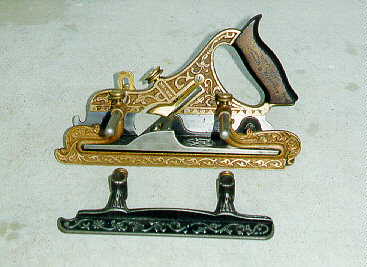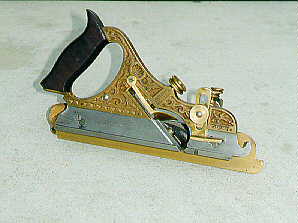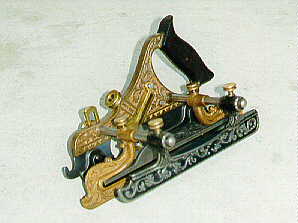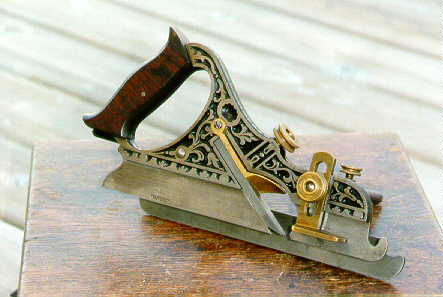#43 Type 5 (1877-1882)
This example of the #43 is in mint condition. To help gauge
a planes condition look at the bridge (top surface) of the body,
this is where the japanning will wear off first. Second is to
look at the top of the arms where the rods go through and to
the side of the arms. This area should be fully japanned with
no iron showing through on the raised areas of the casting. The
skate of the plane should have a high luster. The brass components
should have crisp edges, and the knurling on the screws should
be crisp as well. The tote should have distinct edges, not rounded
and should have a full lacquer finish. Any thing less than this
degrades the condition, typical planes show wear from use and
age and are the norm. |
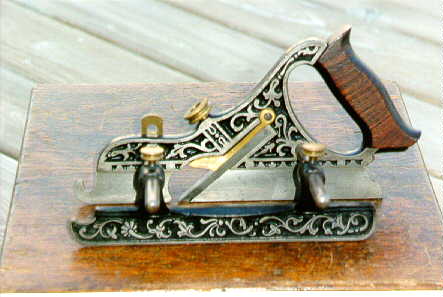 |
